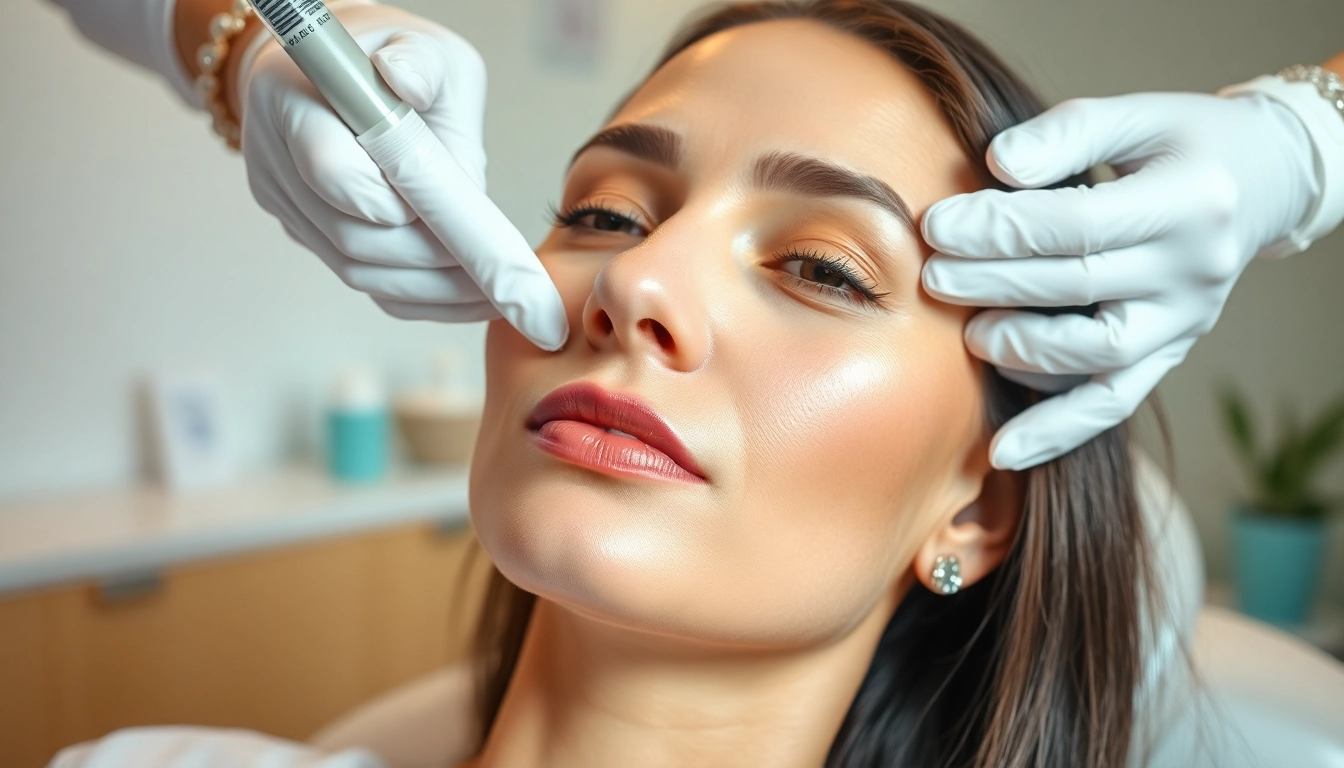Revitalize Your Look with Fillers in Face: How to Achieve a Natural and Youthful Appearance
Understanding Face Fillers: What You Need to Know
In the quest for youthful and revitalized skin, fillers in face have become increasingly popular among individuals seeking to enhance their natural beauty. From filling in fine lines to restoring volume lost to aging, these cosmetic injectables can make a significant difference in one’s appearance. As with any cosmetic procedure, understanding face fillers is essential to making informed decisions about treatment options. This comprehensive guide delves into what face fillers are, their types, benefits, and much more.
What Are Fillers in Face?
Face fillers, also known as dermal fillers, are gel-like substances injected beneath the skin’s surface to restore lost volume, smooth out wrinkles, and enhance facial contours. These fillers are biocompatible, meaning they are designed to integrate safely into the body without causing adverse reactions. Common areas of treatment include the cheeks, lips, under the eyes, and nasolabial folds (the lines that run from the nose to the corners of the mouth).
Different formulations offer varying benefits, allowing practitioners to tailor treatments to meet individual patient needs. As non-surgical solutions, fillers have gained popularity due to their ability to provide immediate results with minimal downtime.
Common Types of Face Fillers
There are several types of face fillers available, each serving unique purposes. Understanding these types can help individuals make informed decisions about which filler to choose based on their specific cosmetic goals:
- Hyaluronic Acid Fillers: Hyaluronic acid is a naturally occurring substance in the body that helps retain moisture and give skin its plumpness. Fillers like Juvederm and Restylane are popular choices for adding volume and hydration to the skin.
- Calcium Hydroxylapatite Fillers: Found in products like Radiesse, this filler is composed of microscopic calcium particles suspended in a gel. It is used for deeper lines and can stimulate collagen production, offering longer-lasting results.
- Poly-L-lactic Acid Fillers: This biodegradable substance, known from Sculptra, is used to replace lost collagen. It works gradually, encouraging the body’s own collagen production and is effective for volumizing areas affected by aging.
- Permanent Fillers: These fillers, such as Bellafill, are designed to provide long-lasting effects by offering volume and lifting to areas of the face but may carry more risks and complications compared to temporary fillers.
Benefits of Using Fillers in Face
The popularity of fillers can be attributed to their numerous benefits, which appeal to a wide audience seeking a non-surgical approach to facial rejuvenation:
- Minimally Invasive: Fillers are injectable treatments that require no incisions, resulting in less trauma and quicker recovery times.
- Immediate Results: After treatment, individuals typically notice an immediate improvement in volume and smoothness, making it a popular option for last-minute events.
- Customizable Treatments: With various types of fillers available, practitioners can customize treatments to match the unique needs and desired outcomes of each patient.
- Natural-Looking Enhancements: When administered correctly by a skilled professional, fillers can enhance facial features subtly, resulting in a natural, youthful appearance.
Preparing for Your Fillers in Face Treatment
Preparation for fillers is an essential aspect of the treatment process, ensuring that patients achieve optimal results while minimizing risks. Proper preparation involves understanding what to expect, undergoing consultation, and assessing suitability for the procedure.
Consultation and Assessment
The journey begins with a thorough consultation with a qualified practitioner. During this appointment, patients discuss their aesthetic goals, medical history, and any allergies or conditions that may affect treatment. Practitioners will conduct a facial assessment to determine the areas that may benefit from fillers, establishing a personalized treatment plan.
It is crucial for patients to ask questions and address any concerns during the consultation. Understanding the procedure, expected outcomes, and potential risks is key to a successful experience.
Potential Risks and Side Effects
While fillers are considered safe, understanding potential risks is vital. Common side effects include:
- Swelling and bruising at the injection site
- Redness or tenderness in the treated area
- Itching or rash in rare cases
More severe complications, though rare, can occur, such as vascular occlusion or allergic reactions. It’s essential for patients to choose qualified professionals with experience in administering fillers to mitigate these risks.
Choosing the Right Filler for Your Needs
The choice of filler will depend on several factors, including the area being treated, desired results, and individual skin characteristics. Discussing preferences with the practitioner can help guide the decision-making process. For example, hyaluronic acid fillers may be better suited for areas requiring subtle volume, while calcium hydroxylapatite may be ideal for deeper lines and folds.
The Procedure: What to Expect During Treatment
Understanding the actual procedure for receiving fillers can help alleviate anxiety and increase patient comfort. Here’s a breakdown of what one can expect during the treatment process.
Step-by-Step Process of Face Fillers
The treatment process typically involves the following steps:
- Preparation: The practitioner will cleanse the skin and may apply a topical anesthetic to minimize discomfort.
- Injection: The chosen filler is precisely injected into specific areas of the face using fine needles. The practitioner will often use a gentle technique to distribute the filler evenly.
- Assessment: After the initial injections, the practitioner will assess the areas to ensure smoothness and symmetry, making adjustments as necessary.
Anesthesia and Comfort Levels
While fillers may cause minimal discomfort, many practitioners use topical numbing agents or incorporate fillers that contain lidocaine to enhance comfort during the procedure. Most patients report only mild discomfort during the injections, similar to a pinching sensation rather than intense pain.
Post-Treatment Care Instructions
Proper post-treatment care is crucial for optimal results and recovery. Patients are typically advised to:
- Avoid strenuous exercise for 24 hours following treatment.
- Steer clear of excessive sun exposure and extreme temperatures.
- Refrain from wearing makeup for at least 12 hours post-procedure.
- Monitor the injection sites for any unusual swelling or changes.
Following these guidelines can help reduce potential complications and enhance the longevity of the results.
Maintaining Your Results with Fillers in Face
To ensure the longevity of the effects and maximum satisfaction from the investment in facial fillers, it’s essential to engage in proper maintenance practices. Here are best practices to consider.
Best Practices for Long-Lasting Effects
To prolong the results of fillers, consider the following strategies:
- Hydration: Keeping the skin well-hydrated can help maintain the plumpness and elasticity that fillers provide.
- Sun Protection: Wearing sunscreen daily can prevent skin damage that may affect the appearance of the filler.
- Regular Skin Care Routine: Using quality skincare products can support overall skin health and enhance results.
- Healthy Lifestyle: A balanced diet and avoiding smoking can improve skin quality and support the body’s natural processes.
Signs It’s Time for a Touch-Up
Fillers are not permanent, and as the body gradually metabolizes them, results may diminish over time. Here are some signs that a touch-up may be due:
- Visible return of wrinkles or lines in treated areas
- Loss of volume or fullness where the filler was placed
- Feeling unevenness in facial contours
Consulting with a practitioner can provide clarity on the timing of touch-up treatments based on individual needs.
Complementary Treatments for Enhanced Results
Many individuals seek to combine fillers with other treatments for enhanced results. Consider these complementary procedures:
- Botox: Effective for dynamic wrinkles, Botox can be used in conjunction with fillers to address both volume loss and expression lines.
- Laser Treatments: Approaches such as laser resurfacing can improve skin texture and tone, enhancing overall facial aesthetics.
- Chemical Peels: These treatments can refresh the skin’s surface, complementing the volumizing effects of fillers.
Engaging in a holistic approach to facial aesthetics can maximize the benefits of each treatment.
Real-Life Stories: Transformations with Fillers in Face
Hearing real-life experiences can provide insights and inspiration for those considering fillers in the face. Here, we highlight user testimonials and expert opinions on the value of fillers.
User Testimonials and Experiences
Many individuals report transformative experiences following filler treatments. Common themes in testimonials include:
- A boost in self-confidence and enhanced facial harmony.
- Decreased appearance of aging signs, such as wrinkles and sagging skin.
- Personal happiness reflected in the ability to express oneself without felt limitations from skin concerns.
Each testimony emphasizes the importance of the practitioner’s skill in achieving natural-looking results and a positive experience.
Before-and-After Comparisons
Visual comparisons serve as powerful evidence of the effectiveness of fillers. Many clinics showcase before-and-after photos, illustrating:
- Improvement in facial volume, particularly in areas like cheeks and temples.
- Reduction of deep lines and folds, showcasing the smoothing effects of fillers.
- A more youthful and revitalized appearance that reflects the patient’s aesthetic goals.
These images often help potential patients feel more confident in their decisions to try non-surgical interventions.
Expert Insights on Patient Satisfaction
Experts in the cosmetic field report high satisfaction rates among patients receiving fillers, provided treatment is done correctly. Factors contributing to patient satisfaction include:
- Clear communication with practitioners regarding expectations and outcomes.
- Understanding of the treatment process, including preparation and aftercare.
- The ability to achieve a natural look without appearing overdone or artificial.
Expert insights often encourage prospective patients to thoroughly vet practitioners and follow up for touch-ups to maintain the desired aesthetic.














Post Comment